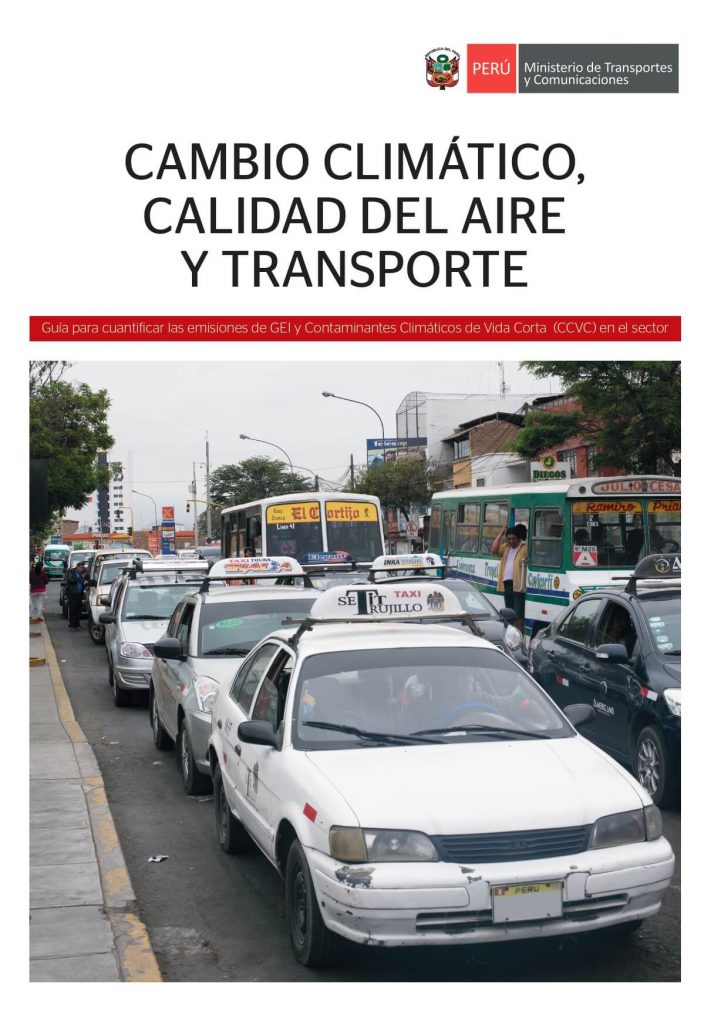
This document explains the relevance of quantifying GHG emissions and local air pollution, and finally explains, step by step, how to proceed, all with a view to designing concrete actions.
The first chapter describes an overview of Climate Change with basic concepts and visible effects in various areas. In the second, the guide addresses air quality management in Peru, its main tools, as well as the responsible authorities. The third section provides more information on mitigation and adaptation strategies and their importance in the transport sector. Especially, section 3.2. is relevant as it deals with the development of a Monitoring, Reporting and Verification System (MRV) for transport sector initiatives (p.42-44).
The fourth chapter continues with the definition of effective environmental management, the need for mapping of key actors and monitoring instruments. The following section then points out the problems of urban transport in Peru and the actions being implemented by the MTC to overcome these difficulties. The sixth chapter contains a tool for quantifying GHGs, ShortLife Climate Pollutants (CCVC) and the economic calculation of externalities (p.72-85). Finally, the last chapter presents the setting of the tool and offers a didactic explanation of how it operates (p.88-95).
Thus, the guide aims to serve as a tool that contributes to the measurement of emissions as part of the strategy to implement action plans adopted by regional and local governments that benefit the population.
Name of the Document: Cambio Climático, Calidad del Aire y Transporte – Guía para cuantificar las emisiones de GEI y Contaminantes Climáticos de Vida Corta (CCVC) en el sector
Organization: Ministry of Transport and Communications Peru
Year: 2020
Number of Pages: 108
Language: Spanish
Download here
